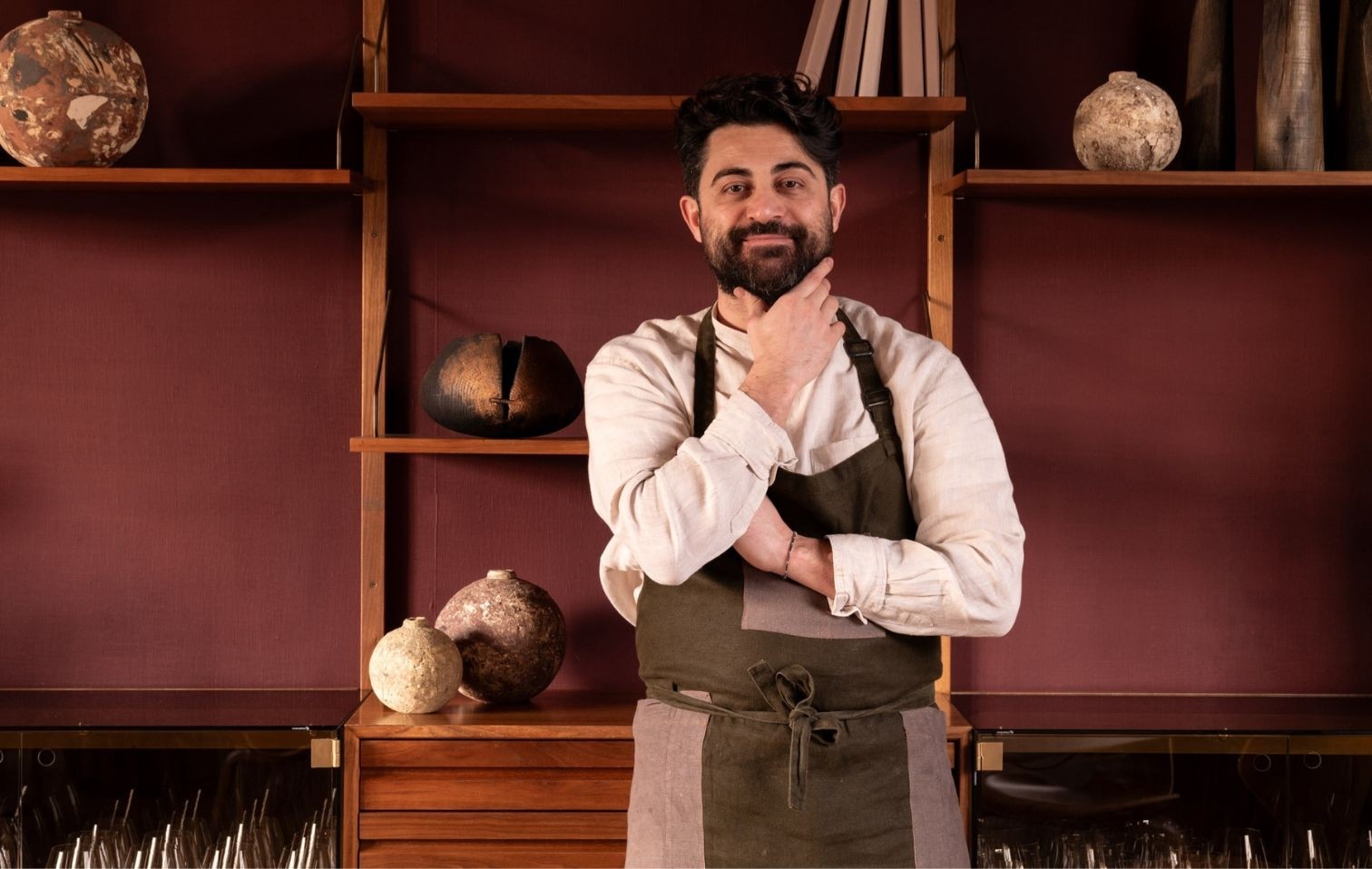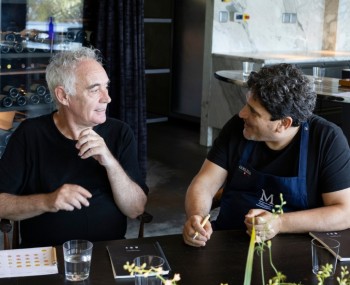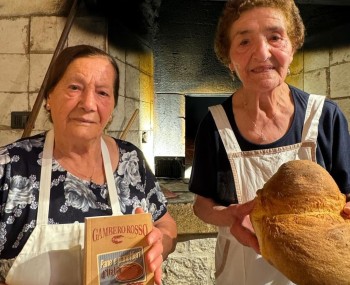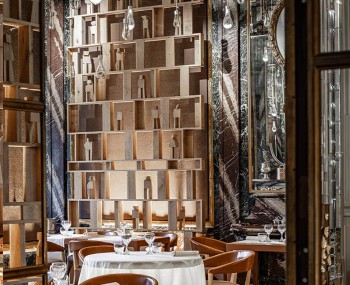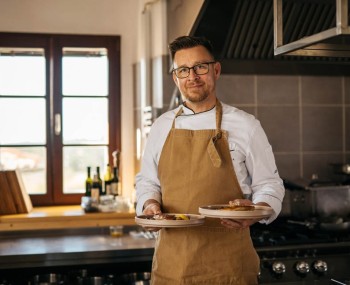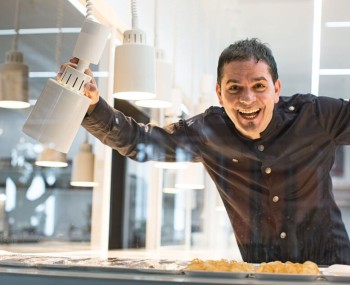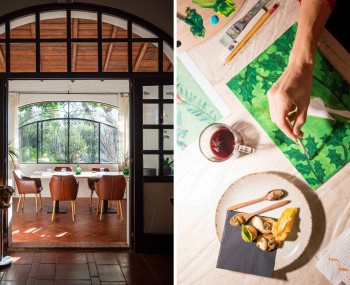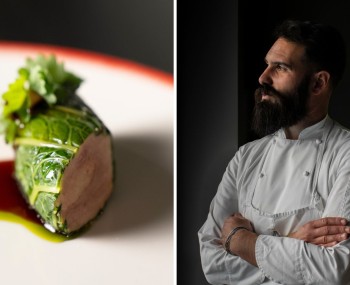Sodano deserves credit for pushing the envelope without fuss: the point is that he does it in the right direction, because his technical background allows him to do so. So here we enjoy, in no uncertain terms, rich and direct flavors, but above all, dishes that entertain from start to finish, without needing to be contextualized for those who do not wish to.
The restaurant
The Valle del Feniletto is located a little more than a twenty-minute drive from Verona: this green oasis of several hectares, populated since the Bronze Age, as evidenced by several findings following an excavation campaign that revealed the remains of ancient pile dwellings, enclosed within it a modern farm. A pristine place, manned by 16 beehives that guarantee and monitor, thanks to the work of bees, its entire ecosystem.
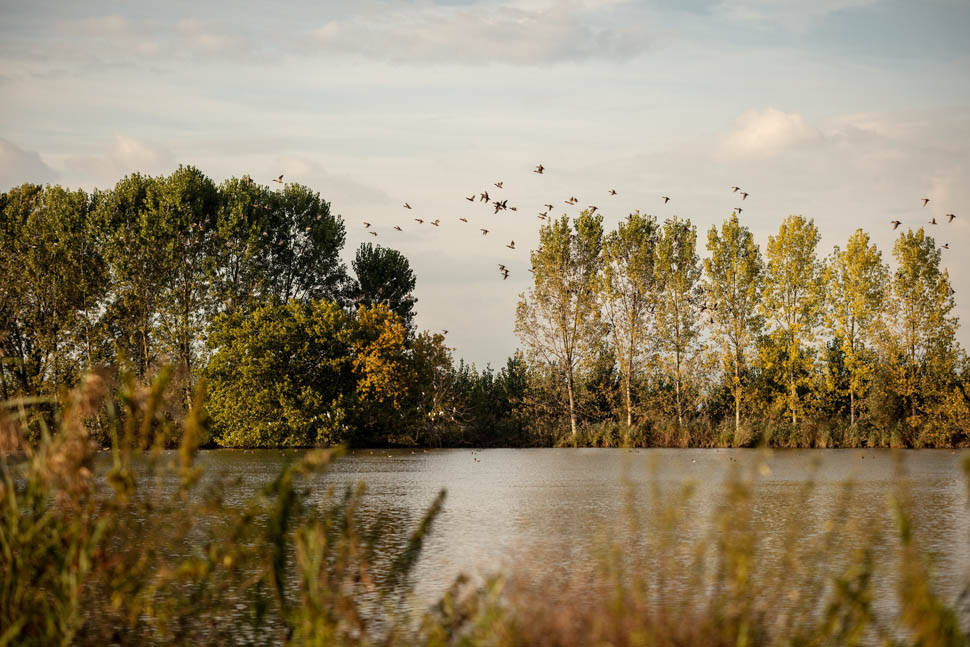
A large barnyard, stables for horses, an organic vegetable garden and an orchard with plants of ancient varieties support a remarkably beautiful (and equally great goodness) restaurant, carved out of what had been a storage warehouse for tobacco and rice, typical of this area: this is where the Famiglia Rana restaurant was born.
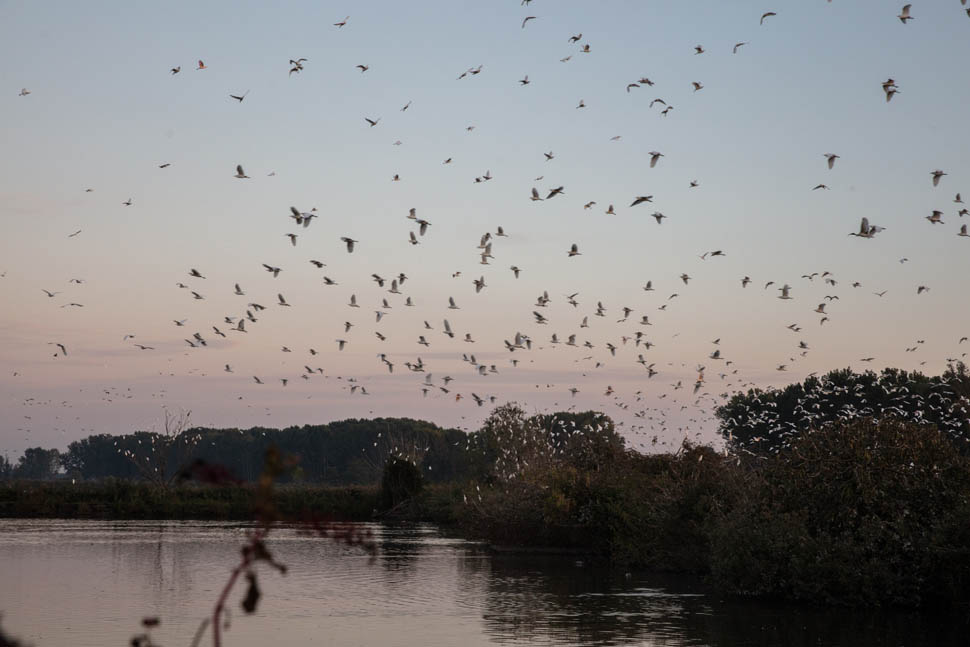
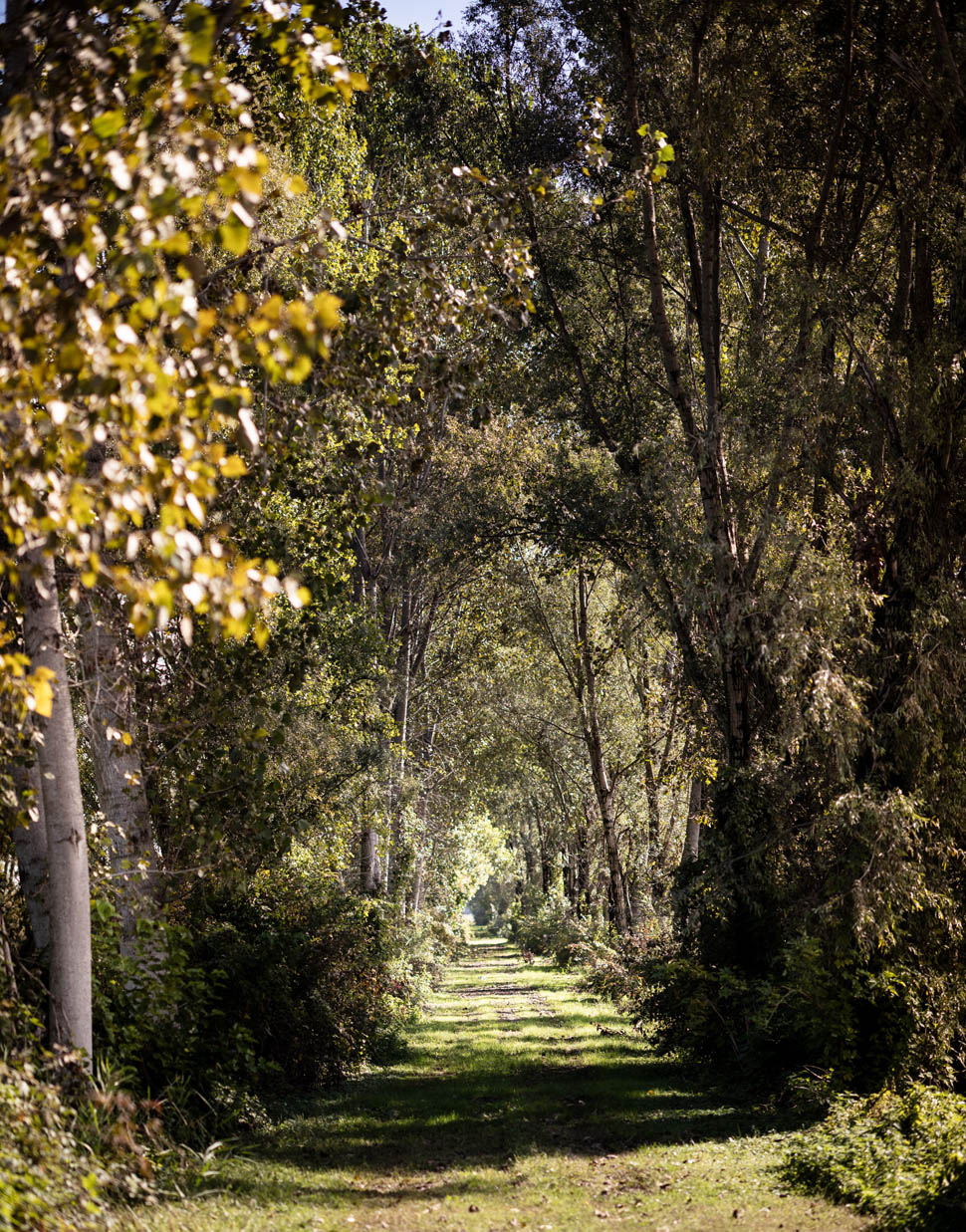
An evocative place, in several respects a container of different worlds, from the floral works of Ottavia Bosco to the walls decorated by the founders of Cantieri Creativi, to the graphics of PÖI, “Poi lo faccio,” a small experimental laboratory in Turin of silkscreen printing and artistic printing. Also, paper clay works by Paola Paronetto and a collection of artworks by Gianluca Rana.
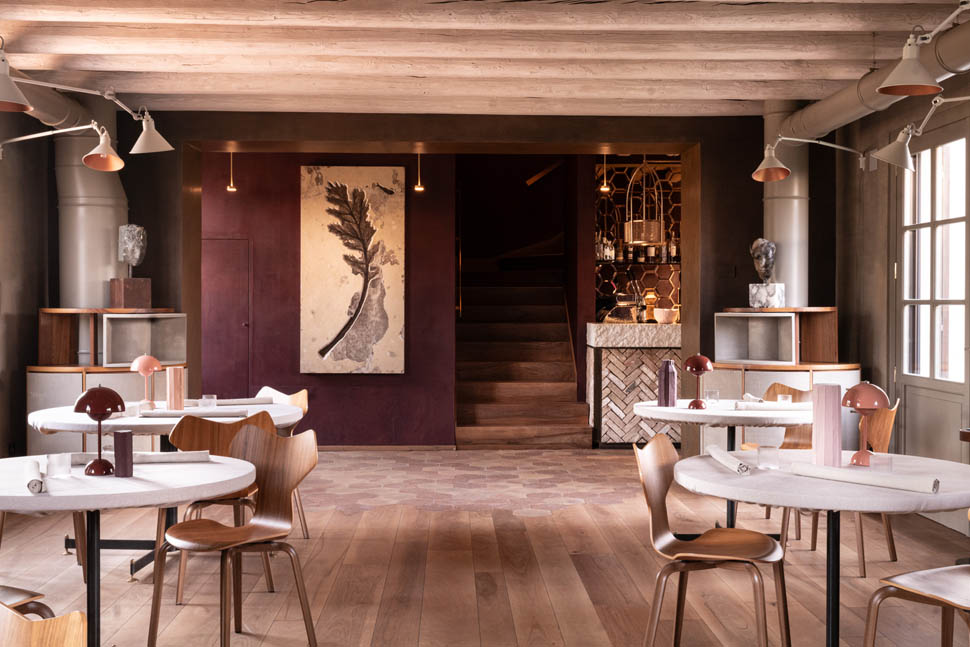
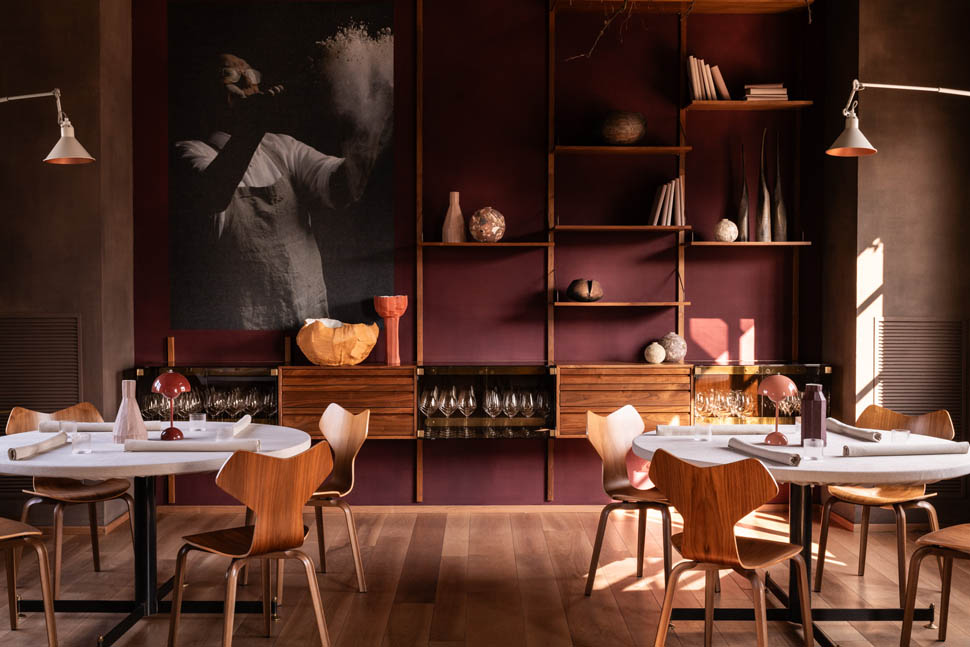
Ownership, it goes without saying, belongs to the Famiglia Rana: the choice of chef, after the exit of his predecessor, fell on one of the most inspiring and stimulating professionals on the national scene. He is Francesco Sodano, from Campania, Somma Vesuviana, class of 1988, who arrived in the Verona area after several important experiences, recruiting a team whose cornerstones are sous chef Nicolò Raduazzo, maître Pasquale Sannino and sommelier Danilo Massa, strong with a wine list with about 1,300 labels available.

Chef
Sodano tells us, "The first impact with the Famiglia Rana, that is, with Gianluca, was getting to know their great humanity, which is not so obvious for a person who is at the head of a group with such a large business. I love this place, even though it is different from what my nature is, because I am a man of the sea. Actually Somma Vesuviana is a small town perched on the hill 450 meters above sea level, it takes me 20 minutes to get to both Naples and the Coast, I'm in between. So I know the countryside and it's part of my background, I grew up with chickens and a vegetable garden, just like here.”
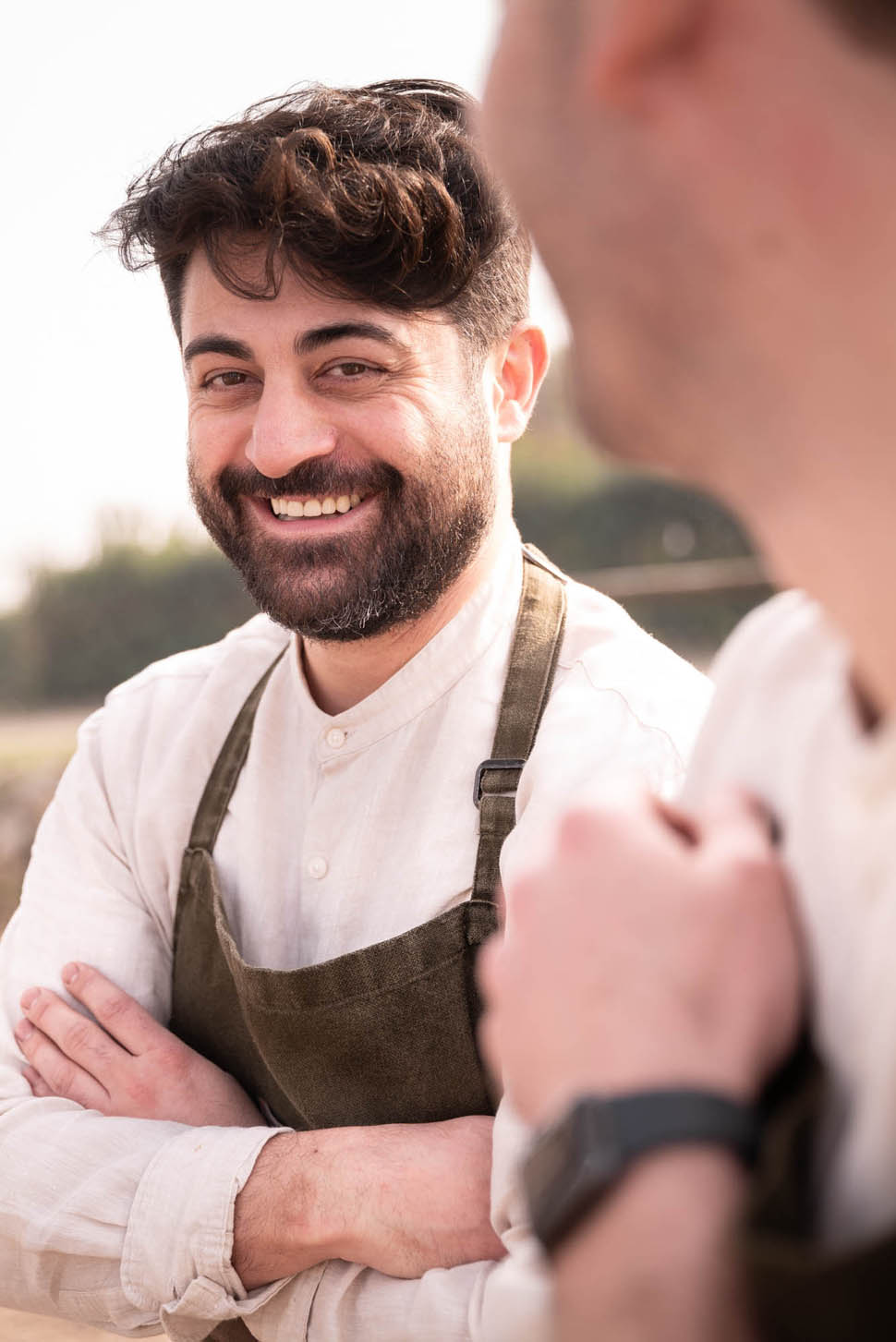
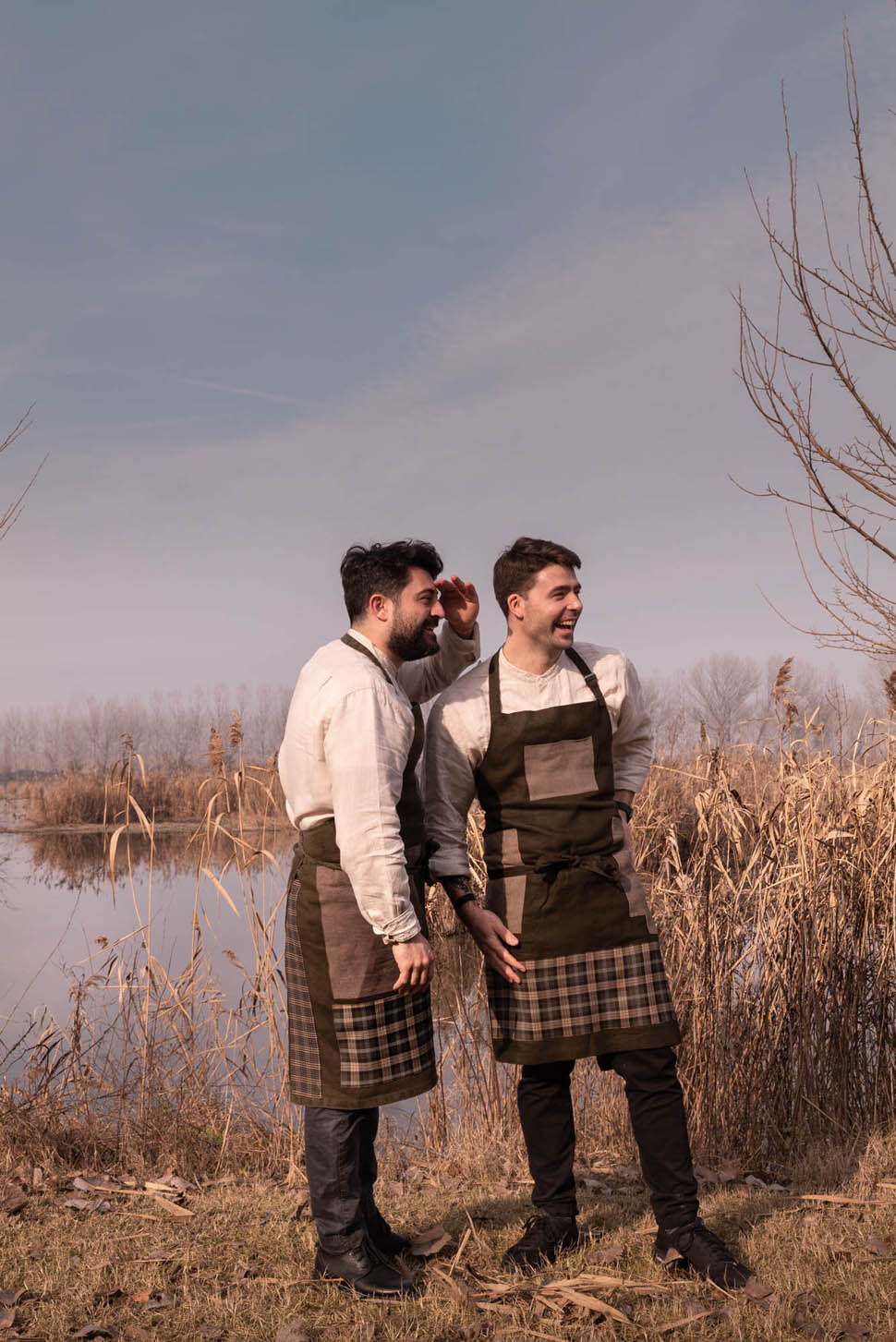
The role models for Francesco have been various, starting with Anthony Genovese: “The experience at Pagliaccio was the most educational, although I have always tried, from the beginning, after setting foot in the kitchen, not to become a copy of my master but to take his teachings and make them my own, because I am obsessed with trying to have my own idea of cooking. The experiences abroad also served me so well: in London, on my off days, I would leave and serve in restaurants, at that time there was always a demand for staff. In any Michelin-starred one they would call you to do these four-hour shifts where you would do a service with them: you see nothing and you see everything, but you get a sense of the wave, you see the ambiance, and most importantly you taste the dishes, if you're seasoned.”
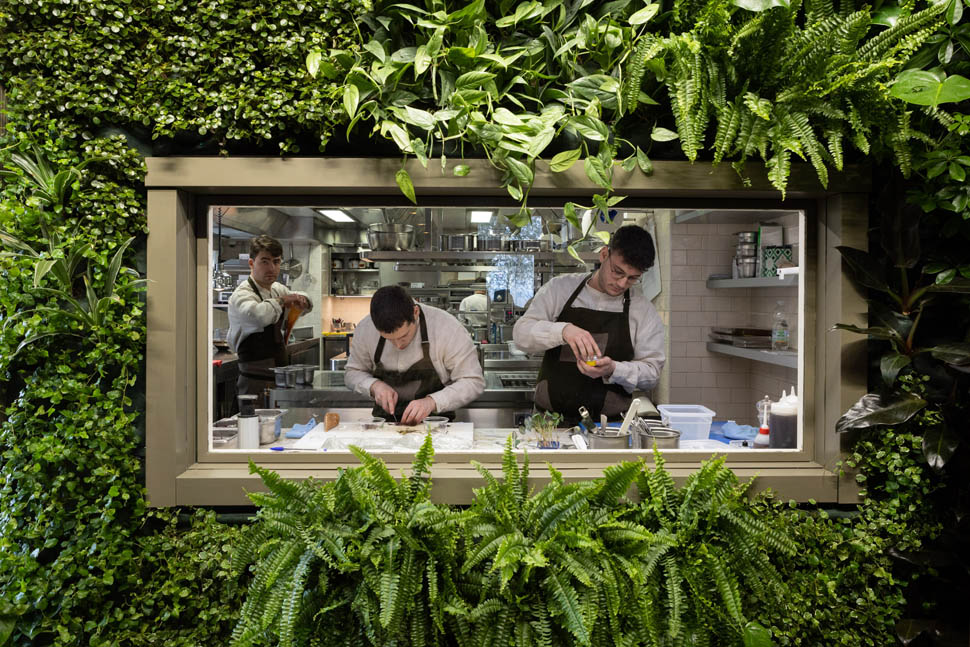
And in fact Francesco was, with his two years together with Oliver Glowig, three and a half at Pagliaccio and then at Faro di Capo d'Orso with the chef who would precede him, as well as others in Italy and France. Before arriving in Oppeano, Sodano spent time out of the kitchen: “There was a time gap where I was consulting at Local in Venice with my brother. I was also doing training, while I had the goal of opening my own place; then this collaboration came up and I gave up the idea of making a very important investment, given also the historical period. For more than a couple of years I didn't have my own kitchen, but I didn't stay still because I studied and did research. Being away from the daily grind helped me a lot, because when you're on the inside you're always busy, caught up in a thousand things, and it's hard to have moments when you can dedicate yourself to your own identity. I took advantage of that to create a new one, and I also had the opportunity to travel abroad, to see the places that were particularly in vogue, to understand and try.
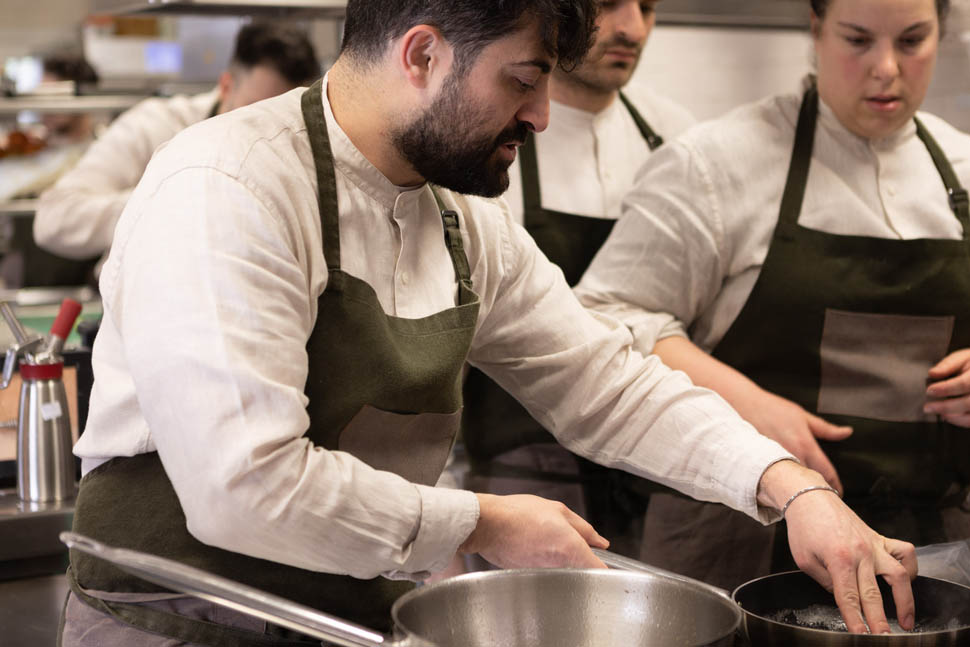
Compared to Capo d'Orso, I had a 360 degree evolution, even on how to conceive the dishes. Certainly it was also a physiological issue, because there was the Covid that changed culinary habits and people's perception, with that initial boom where gourmet restaurants were working so much. Then also came the crisis, with a sad return to reality." That's why Francesco, an avant-gardist in soul, with a remarkable gastronomic culture and a very pronounced technical spirit, has also changed his cuisine: “Today I would call it more immediate and impactful: recognizable, above all. Before maybe it was a little more niche thing, but today I always try, both in ingredients and preparations, to be as immediate as possible. A dish has to be as good for people who eat in three hundred restaurants a year as it is for my grandmother. Understandable does not mean that there should be no technique, have its own peculiarities and wow effects, but that it should be impactful and recognizable.
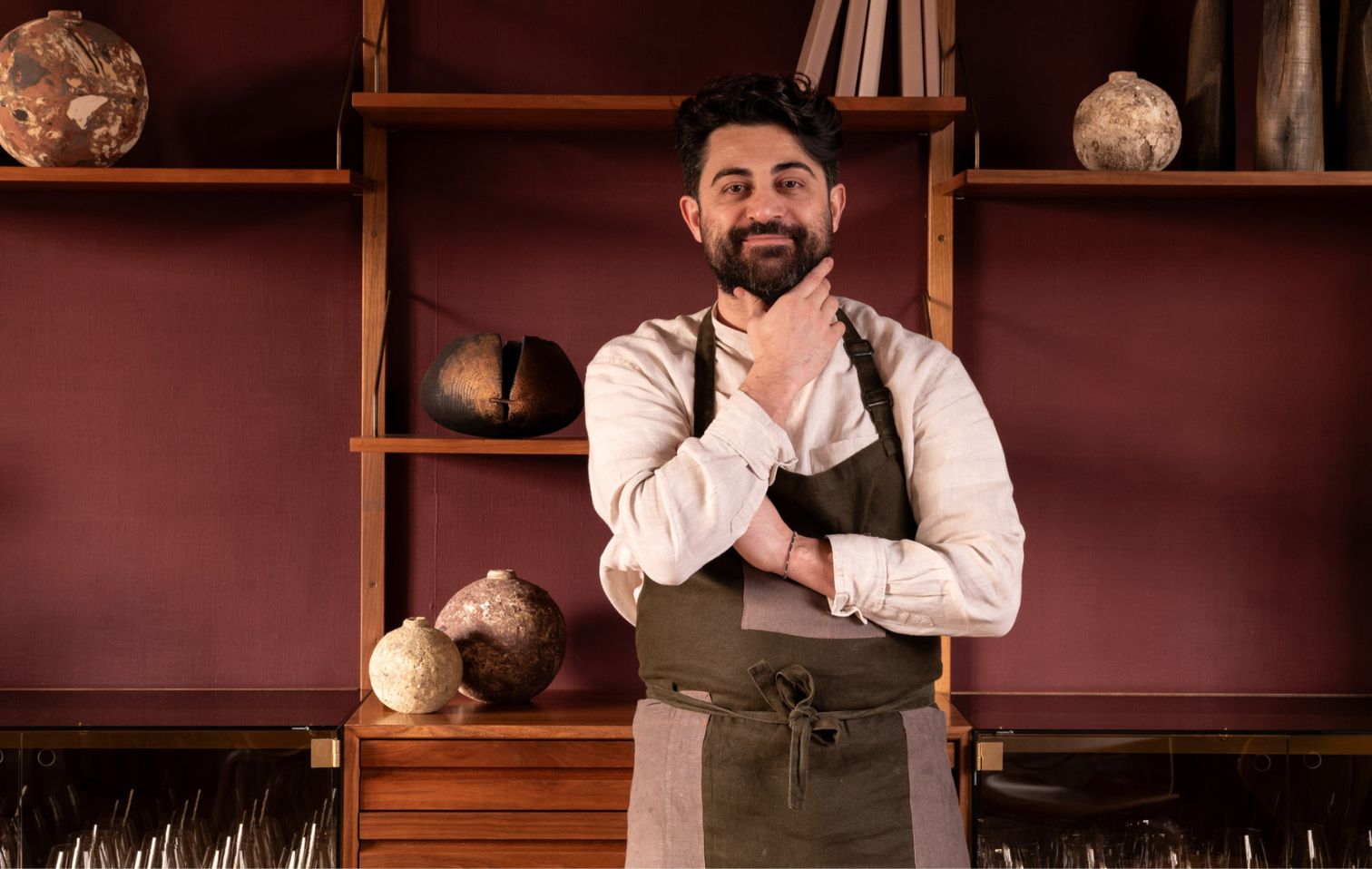
If a dish is to be understood already, it's not good, because it's okay that us working in the industry can perceive different nuances, but the end result has to be good for everyone. Before, for example, in the black lemon risotto I used to make on the coast, I would push the acidity sky high, but someone would send it back because it was too much. My thought then would go 'whatever, this one doesn't understand anything.' Actually, I was the one who didn't understand, because 95 percent of the people who support a restaurant are not the gourmet clientele nor are they colleagues, journalists or food critics." It must be said, for the avoidance of any possible misunderstanding, that this approach of pragmatic wisdom certainly does not result in discolored dishes or softened versions of interesting but unfulfilled ideas. Rather, Sodano deserves credit for pushing without fuss: the point is that he does it in the right direction because his technical background allows him to do so. So, here you enjoy, in no uncertain terms, rich and direct tastes, but above all, dishes that entertain, from start to finish, without needing to be contextualized for those who do not wish to. First you eat, in short: then those who are curious to delve deeper will find bread for their teeth.
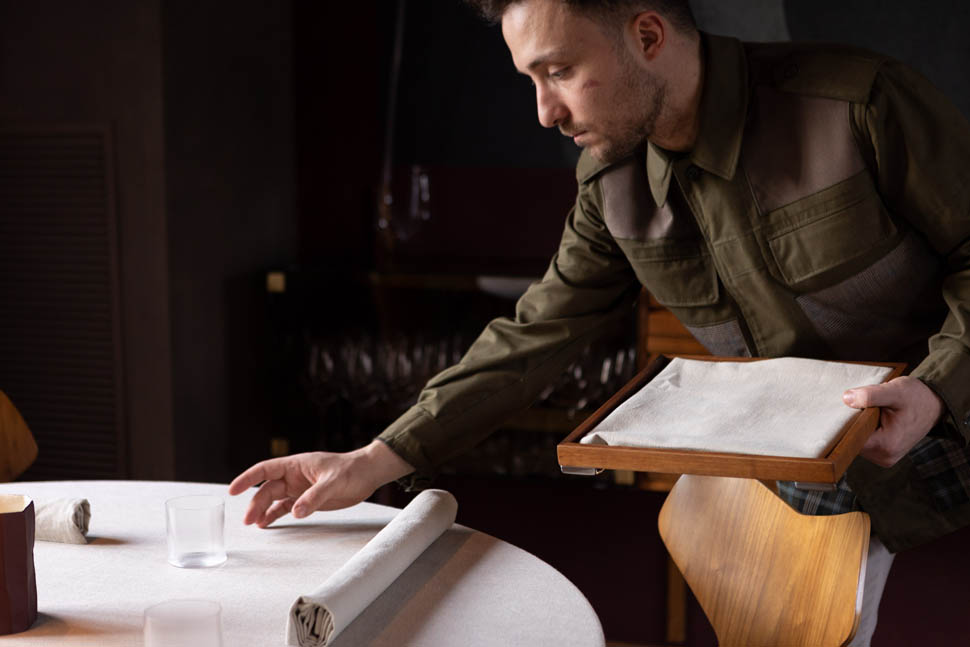
The Dishes
We start with amuse bouche that prepare for the sequence: the crispy tomato cannoli with pulled octopus, fermented jalapeno and buffalo yogurt, the fermented seaweed waffle with an oyster emulsion and char caviar. Plus the mouthwatering waffle with almond cream, caper leaves, salted bergamot and pumpkin seed miso. For the 'cozza alla romantica,' Francesco tells us, “I took inspiration from a chef from Ischia who got a Michelin star in '77, is 88 years old and still works and makes these fantastic arraganate mussels.” The mock nigiri, Italianized with paddy rice (a recurring pasta for Francesco), is remarkable: “We go to create an emulsion that is somewhat reminiscent of the classic sushi condiment, a horseradish cream replaces the wasabi, we add shiso to give a vegetable note and a 150-day matured tuna”.
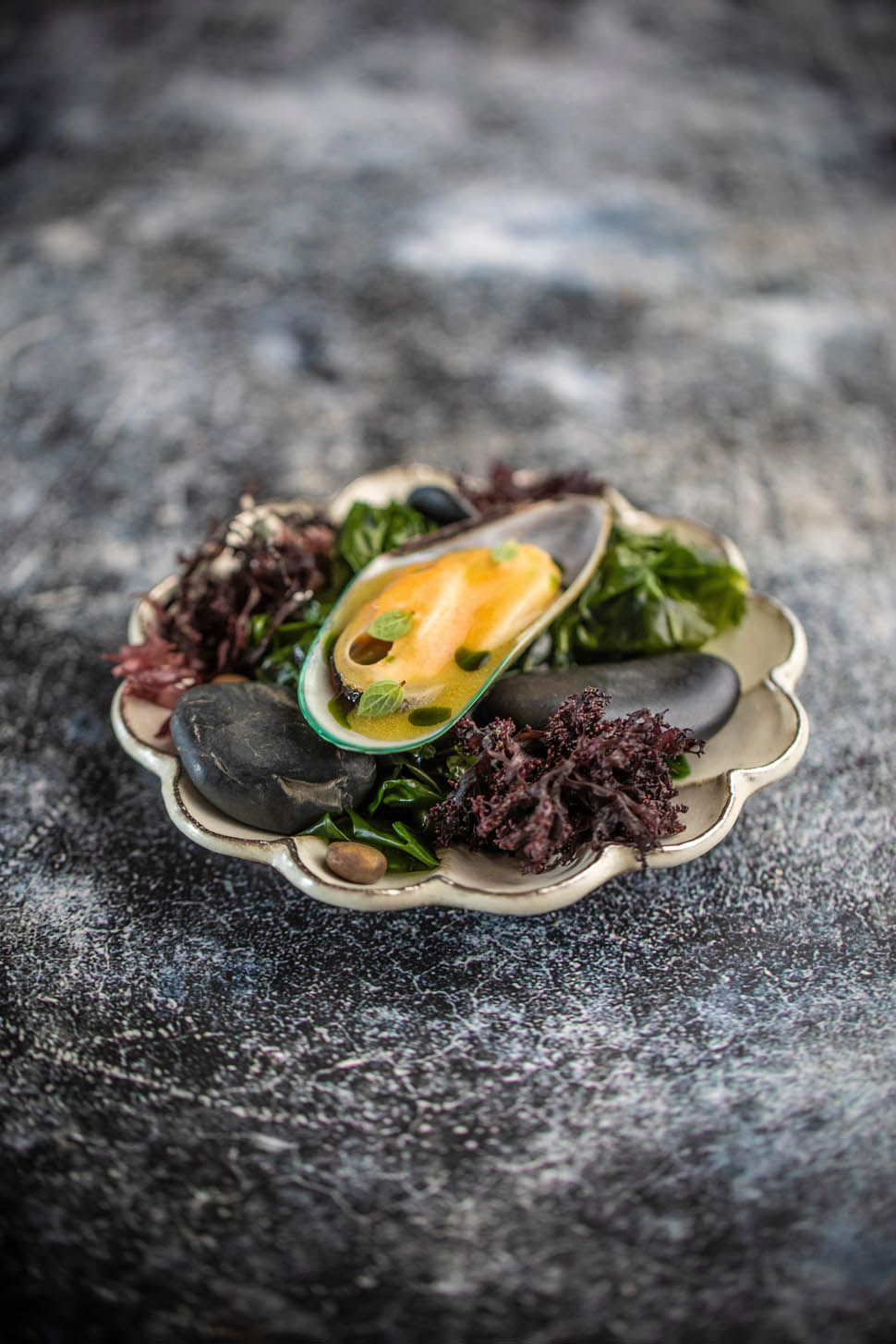
Here at last is an interpretation that makes abalone delicious, as well as edible: Sodano makes it 'gallega-style,' inspired by Spanish octopus; the abalone is processed in ultrasound and takes on a nice calloused texture, reminiscent of the texture of octopus: a potato cooked in beef fat is then added and an escabece-like emulsion with vinegar with paprika, green peppers and chilies, and smoked garlic emulsion.

The carabineros takes on a particularly mouthwatering juiciness: matured for 10 days in beef fat, it remains almost raw after cooking at 42°C, passed through yakitori and napped again with dry aged beef fat. It is served together with a creamy quenelle of lacto-fermented green chilies blended with tomato water. Finally, tomato vinegar and a veil of raw garlic, blanched basil and cilantro chlorophyll are added. Inside is a Worchester sauce and drops of Tabasco, on the plate a shellfish bottom. But that's not all, because the shrimp also has its second service, in an iced cup that contains a cream of chilies and sea urchin ice cream with Campari salt, as well as two sauces: a shellfish oil and a cilantro oil; finally, the head of the shrimp, roasted on the grill, is squeezed over the whole.
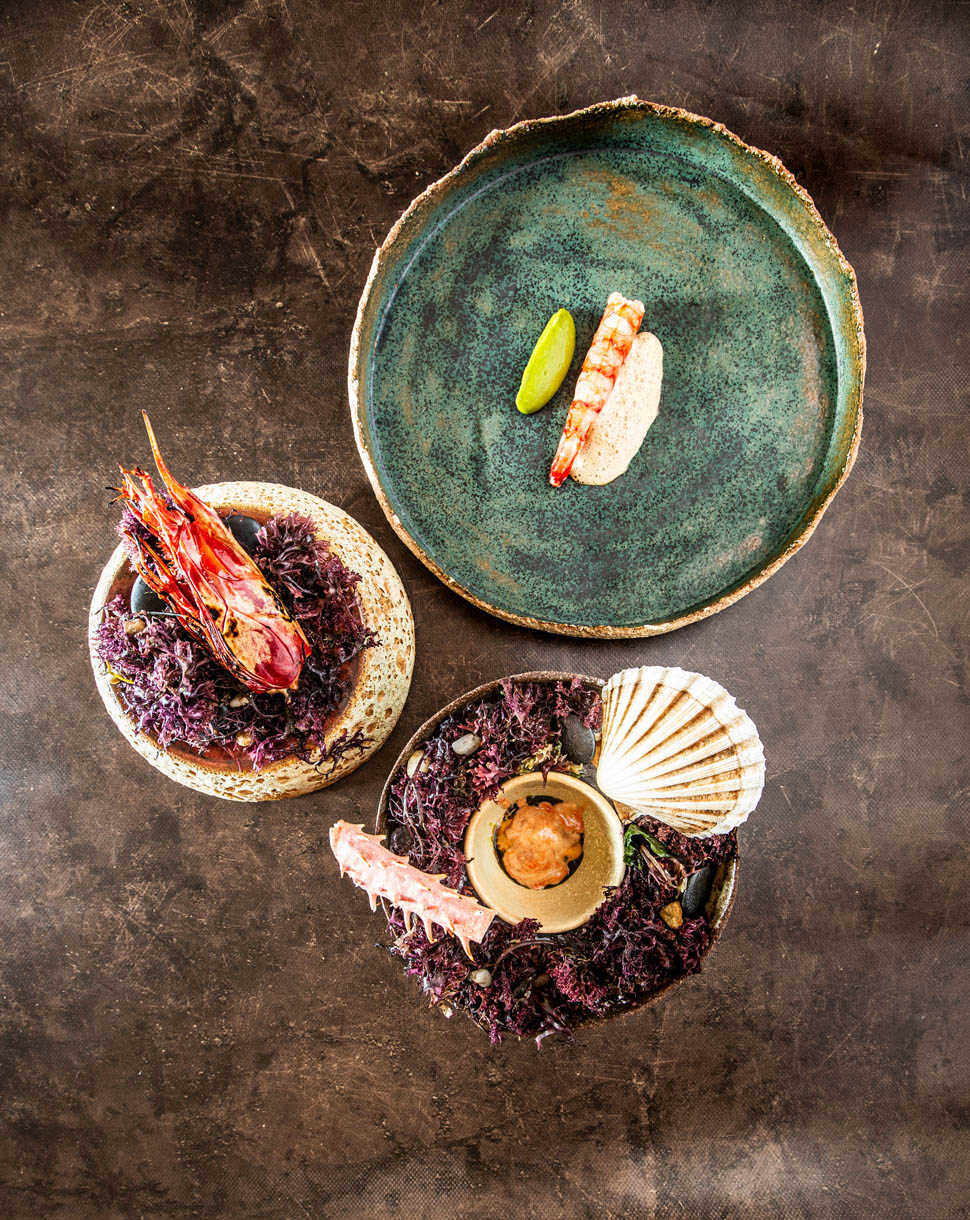
The linguine cooked in cuttlefish and fennel extraction are also highly satisfying : “Conceptually, it is a garlic and oil pasta that we wet with fennel water, stir-fry, a few drops of Chartreuse to give note a balsamic and open up the vegetable part; then a cuttlefish drippings, over the same cuttlefish compressed in its garum, using Gastrovac; again, the egg sac worked as one of roe to grate over; wild fennel powder and fennel chlorophyll to give vegetable intensity and we conclude with Beluga caviar Famiglia Rana selection. " The side of this dish is 'all about cuttlefish,' all about the cuttlefish: “What is not used is processed at the pacojet: we make a paste, coagulate it, dry it and fry it, until it becomes 100% cuttlefish chips; over cooked cuttlefish with emulsion of its fifth quarter, caviar and roe.”.
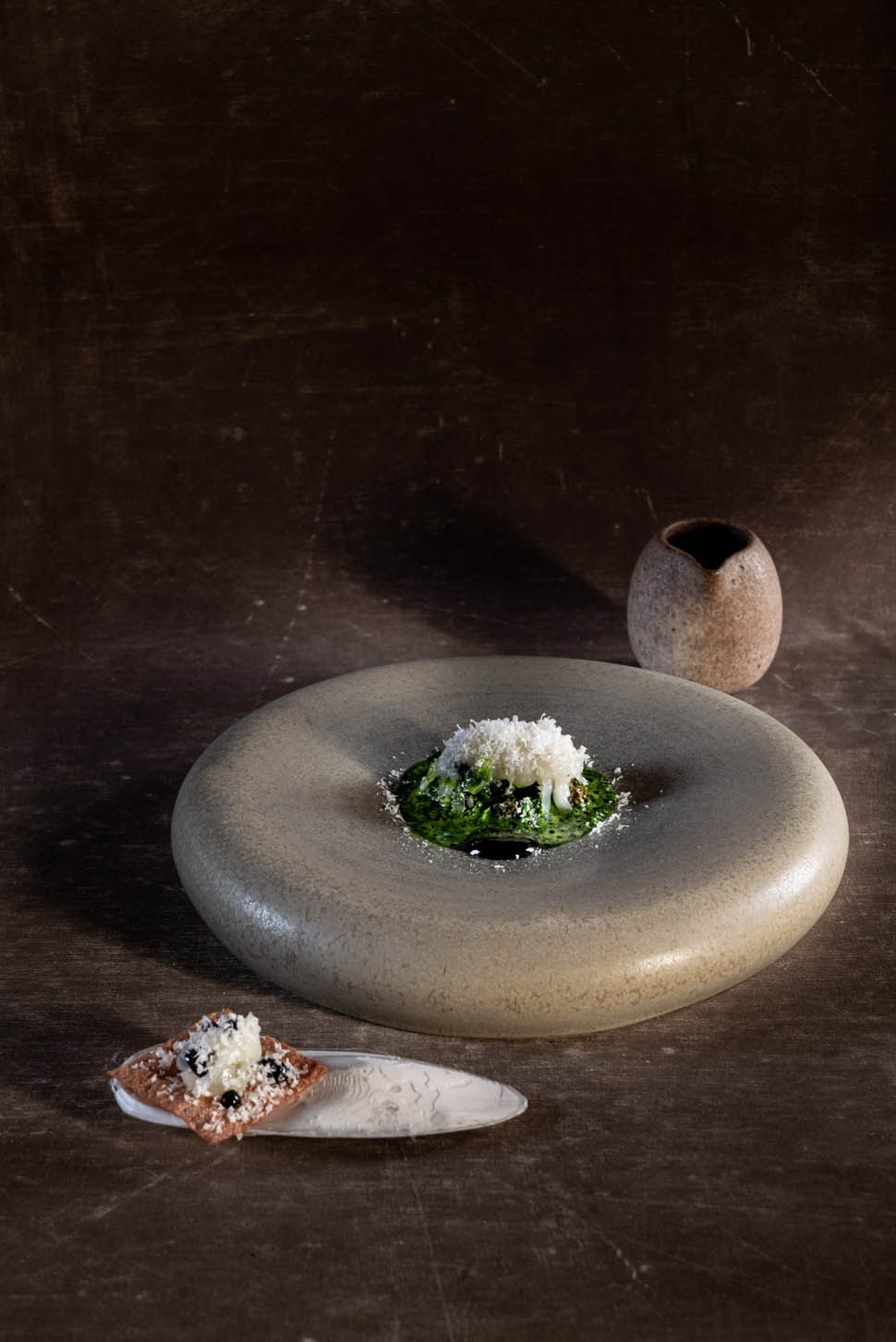
It is time for a 100% egg yolk gnocco without gluten or flour. “It is first curdled -40°C and then at 68 degrees at the base of the dish is a freeze-dried mushroom rehydrated in a broth that we make from scraps, including the soil part; the texture of the mushroom is that of cooking but it is completely raw; on top, a freeze-dried porcino and to finish a broth of distilled Parmigiano Reggiano and just a touch of verbena to give freshness." The tuna cheek is another marvel of flavor and intensity: “It is served rare, being a muscle it is very fibrous, we work it in ultrasound by completely defibrating it. Marinated, barbecued, it is served with lacto-fermented endive inside a savory black lime solution; then from chervil and wild tarragon we extract an oil and whip up an eggnog." Last savory course, "the duck is back, the duck is black", a succulent series of variations on duck.
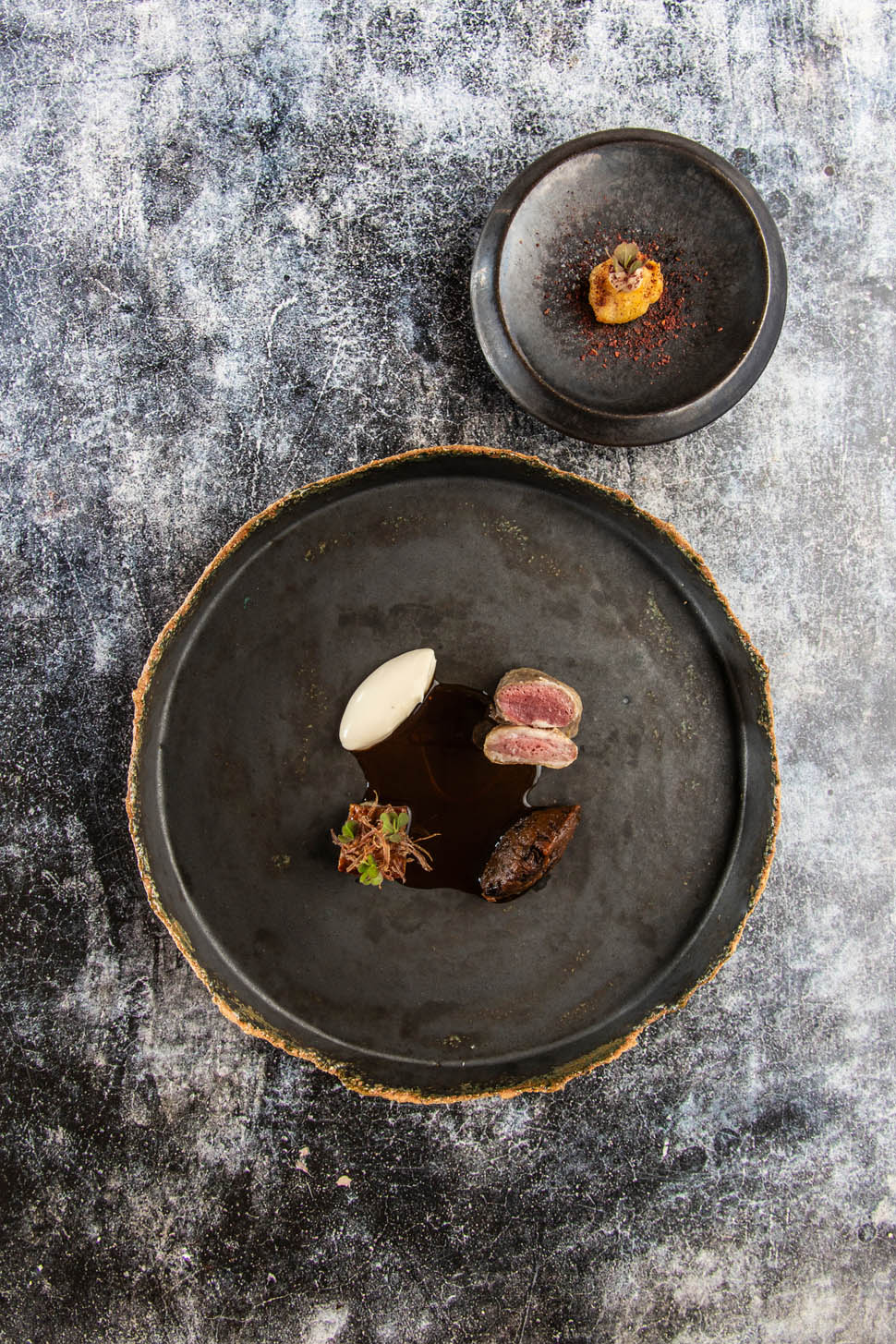
“The first part is a cooking in beeswax with sodium acetate solution that we pour at the table: from the liquid state it turns into a solid and the temperature rises and manages to hold for 35, even 40 minutes, then we remove acetate and wax and cook it in a pan à l'ancienne, on the bone. It could not miss a pâté of livers. The bottom is a jus à la presse: we press the whole carcass, combine it with the broth, and go to assemble the express sauce by deglazing the pan where it was cooked. We use an accompanying eggplant chutney and apple to give acidity. The duck's wings and scraps, cooked confit, are found in a Vietnamese-style won ton, enriched with cream of salted sumac lemons and sorrel.” Nice passing dish is the Finiletto Valley minestrone: celeriac, carrot, parsnip, red turnip, apple pear, strawberry grape and a homemade vermouth gelled into the dish; still a juice of old apple, small and very sour, cut with shiso water; on top nepitella, pimpinella, wild thyme, savory, green sorrel, nasturtium; it is finished with fennel chlorophyll.
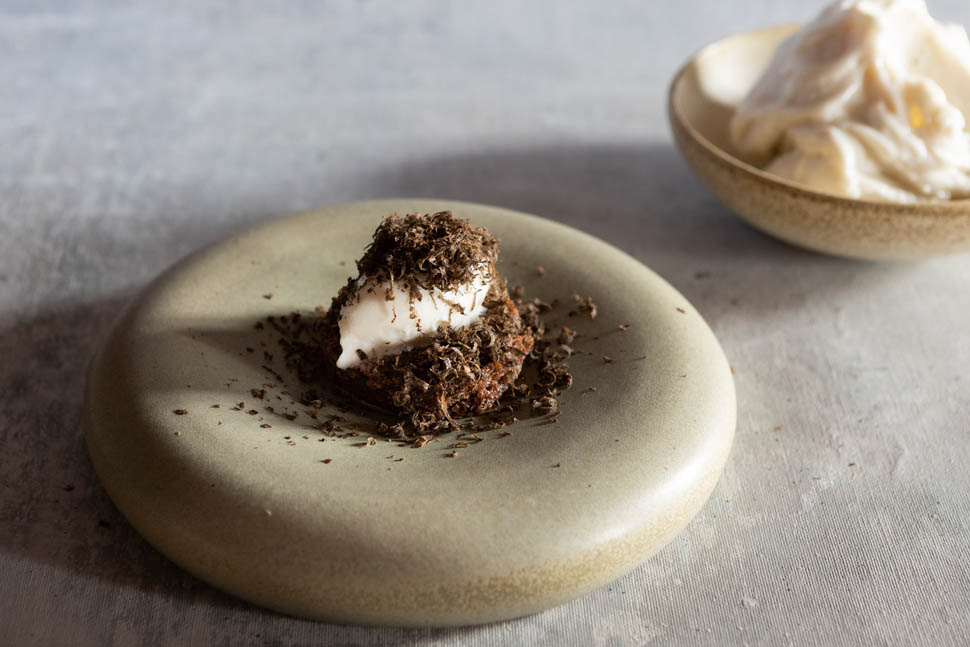
What a good “ il viaggio in Sicilia”, made with almond cedar and capers: almond cream and white chocolate ganache, caper gel, bergamot gel, candied citron, toasted and caramelized capers, muscovado crumble and caper gel; in between a quenelle of almond ice cream and mousse of the same. On top a camouflage of toasted cedar, flavored with pepper and caper powder. A bread and Nutella sui generis, of absolute goodness, is served by reversing the colors as in a negative. The bread, dark here, undergoes an oxidation process by means of the Ocoo, a Korean pressure cooker: the sugars contained within the flour proteins caramelize, causing the oxidation to pull out the toast: it seems to find them again, but there is no cocoa or chocolate. On top is a clarified hazelnut oil-based ice cream, a flake of salt, and grated truffle. The solid part at the base is a hazelnut praline. A very topical and memorable cuisine.
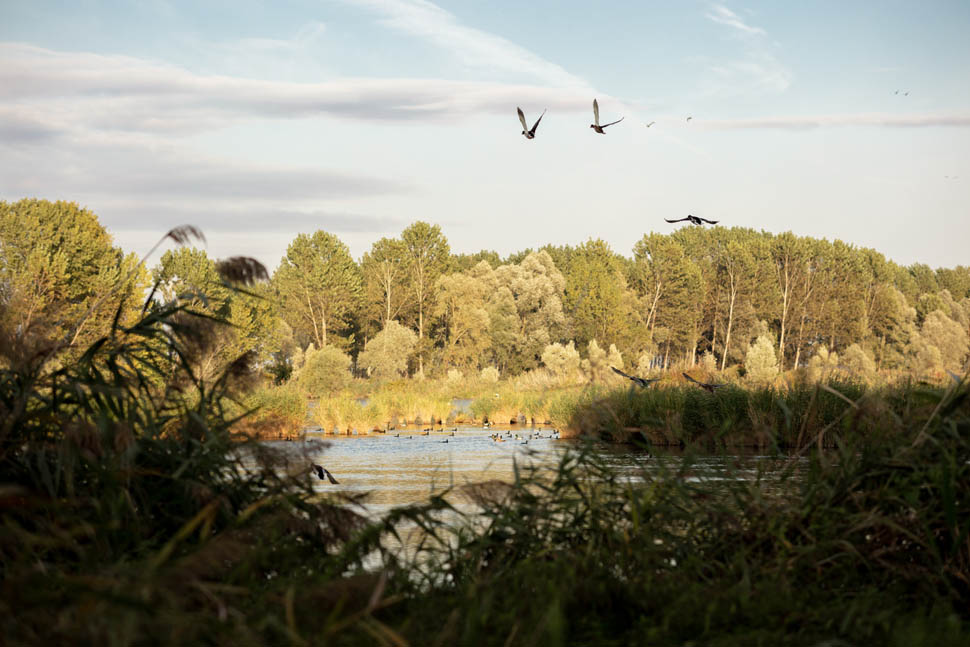
Contact
Famiglia Rana
Via Feniletto, 2, 37050 Oppeano VR
Phone: 045 713 0047
